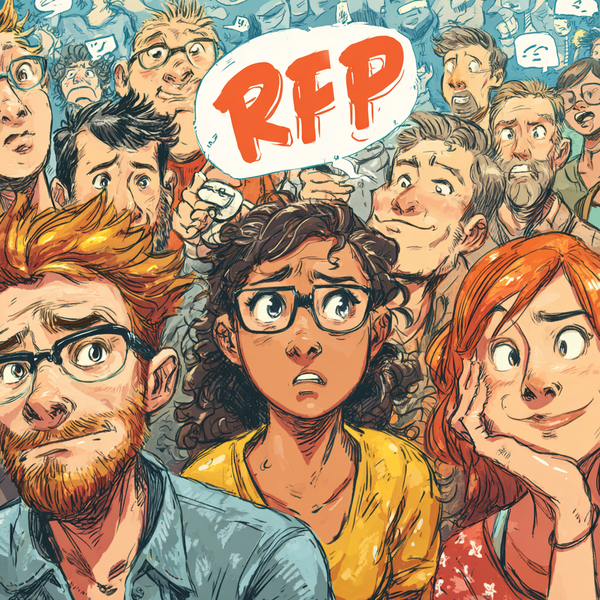Flattery in Cold Emails Is Getting Old (Fast)
Flattery might open doors—but not when it’s empty. This week, I received a handful of cold emails that tried (and failed) to impress me with vague compliments. The problem? They didn’t do their homework.

“Hi Santiago, I noticed your impressive growth…”
Let me stop you right there.
This week I’ve been on the receiving end of yet another wave of cold emails—ones that think they’re being flattering but are, frankly, just lazy.
I’m not trying to be snarky (okay, maybe a little), but we’ve all seen these:
Exhibit A: The Ego Rub That Doesn’t Even Try
“Hi Santiago, I noticed SMDigital's impressive growth and how your tailored digital strategies have significantly impacted client success stories recently.”
On the surface? Polished. But scratch the surface and it’s clear they didn’t even look at our site. “Impressive growth” and “client success stories” are vague fluff—an all-too-common template that could apply to literally any agency.
A few seconds later, they’re pitching a media buying solution we don’t even need. And now I’m wondering…
Did you even Google us?
Exhibit B: The “Impressive Portfolio” With Zero Research
“Saw SMDigital runs paid ads in West Palm Beach—impressive portfolio! Would guaranteed meetings with businesses needing ad management help stabilize your revenue?”
Again—what portfolio? If you’ve seen something impressive, tell me what it was. A case study? A campaign we ran? A client we scaled?
This isn’t just lazy—it’s risky. When you flatter without evidence, it signals that you’re not genuinely interested. You just want in the door.
And that rubs people the wrong way. Myself included.
Exhibit C: The Hollow Compliment Trap
“I saw your profile and I am very impressed with your accomplishments. I'd love to talk to you about your business.”
Let’s be real. If you were impressed with my accomplishments, you’d mention one. Instead, you’re pitching me a new website.
Do you even know what we do here?
This kind of messaging doesn’t just fall flat—it damages your credibility. And if you’re using this tactic across your entire list, you're burning bridges before they’re built.
Exhibit D: The Pretend Deep-Dive
“I noticed SM Digital’s recent push into digital transformation and marketing automation—super impressive, especially with the SBA loan helping retain key roles.”
Nope. We never took an SBA loan. And we’re not pushing into marketing automation—we’ve been in it for years.
It’s a copy-paste job with a plug-and-play vertical reference. And that’s dangerous, because now you’ve not only lost me—you’ve misrepresented me.
Exhibit E: The Kind-But-Empty Compliment
“I was impressed by the content of your blog and enjoyed reading it.”
— Harikrishna Kundariya, CEO of eSparkBiz
Harikrishna—thank you, truly. But which article? What part resonated? If you’re going to lead with a compliment, anchor it to something real.
You don’t need to write me a book—just show you’ve done your homework. That’s how you stand out.
One That Almost Got It… But Didn’t
“Based upon what I saw while deep-diving your website, it looks like you're an expert at helping your clients achieve substantial growth through tailored digital marketing solutions.”
This one at least read the hero headline on our homepage. But again, no mention of what case study or blog post or unique offering caught their attention.
Even a little specificity would’ve gone a long way.
So, What’s the Lesson Here?
We’ve normalized flattery as an icebreaker, but it’s lost all meaning. What once felt like a compliment now feels like a red flag.
And the sad part? The companies sending these messages aren’t bad people—they’re just stuck in bad templates.
If you want someone’s attention, show them you actually paid attention. Read a case study. Watch a video. Skim the blog. Then ask a question rooted in what you found.
Even better? Be direct and relevant.
A Note to the Senders (Yes, I’m Tagging You)
To the companies and individuals who sent these emails: no hard feelings.
Seriously.
I’m sharing this not to mock, but to offer a chance for all of us to do better. We’ve all sent cold emails. We’ve all tried shortcuts. But now’s the time to evolve.
You can still win with cold email. You just need a smarter, fresher strategy.
Want to Fix It? Let’s Rework Your Cold Email Game
I consult agencies and business owners on messaging that works—especially cold outreach.
If your open rates are decent but no one replies, or your personalization is falling flat, let's rewrite your playbook together.
👉 Book a free consult here and let’s stop stroking egos and start sparking real conversations.




